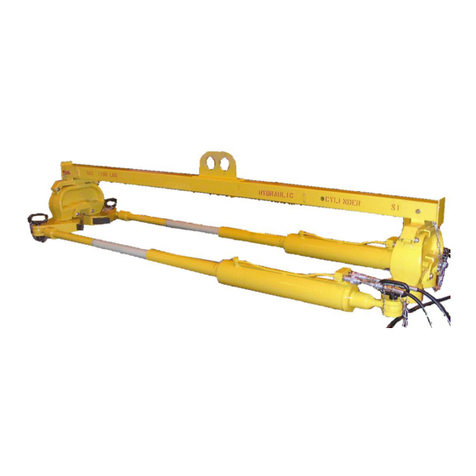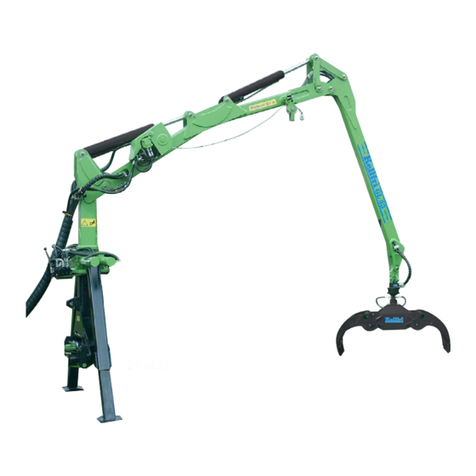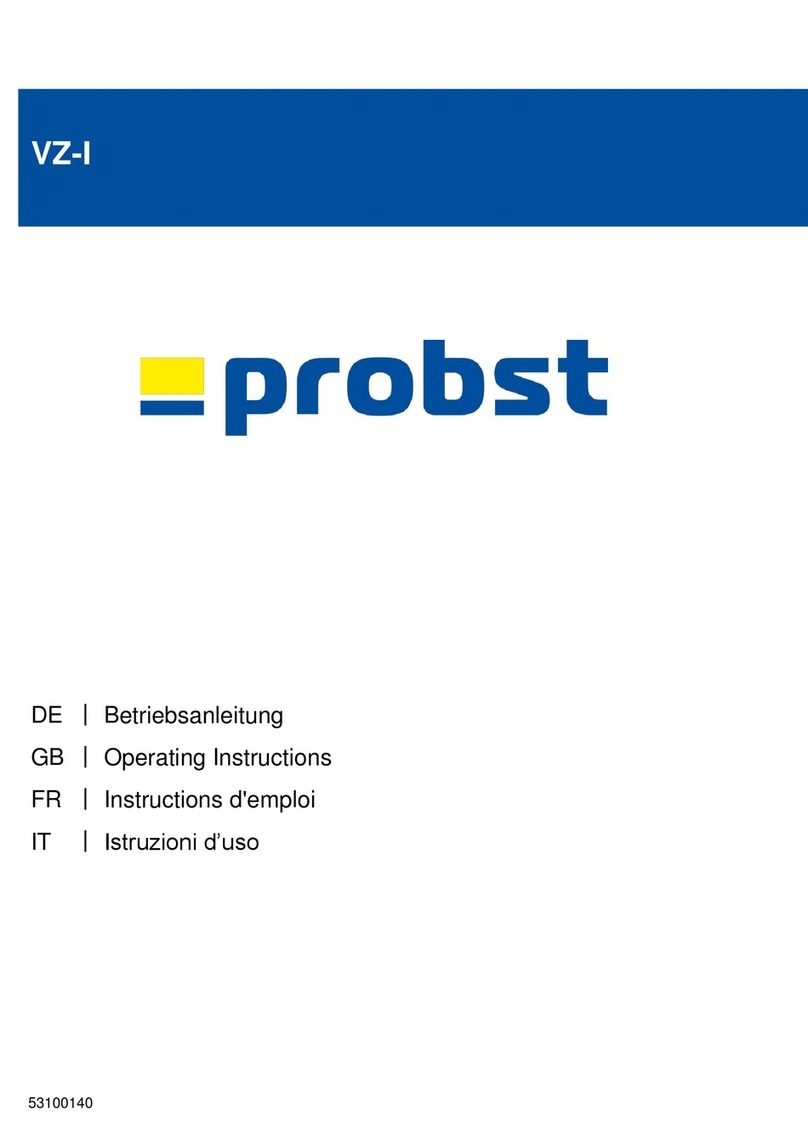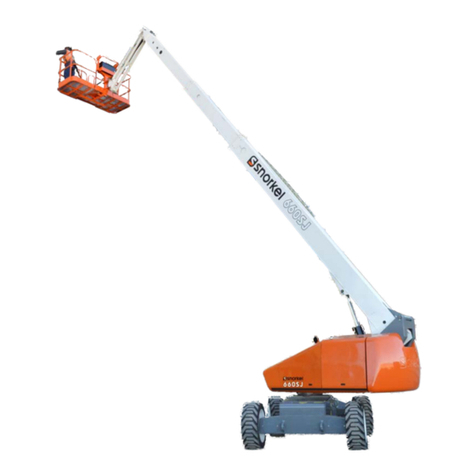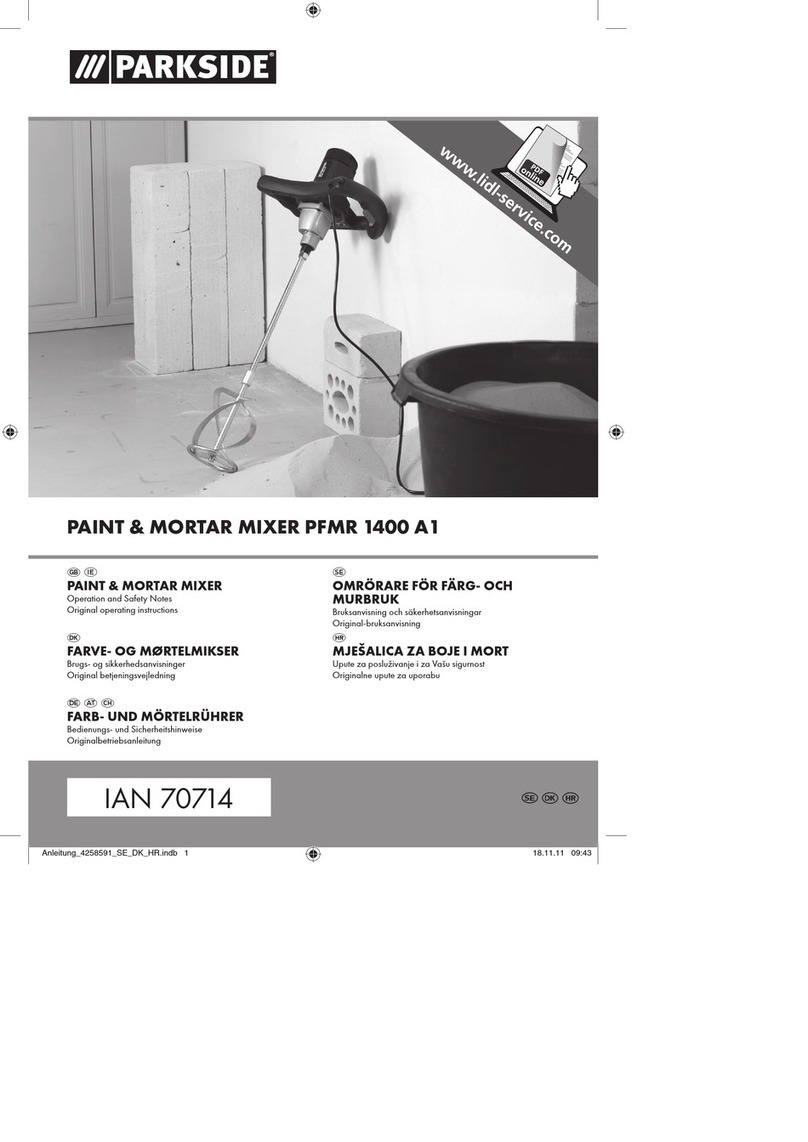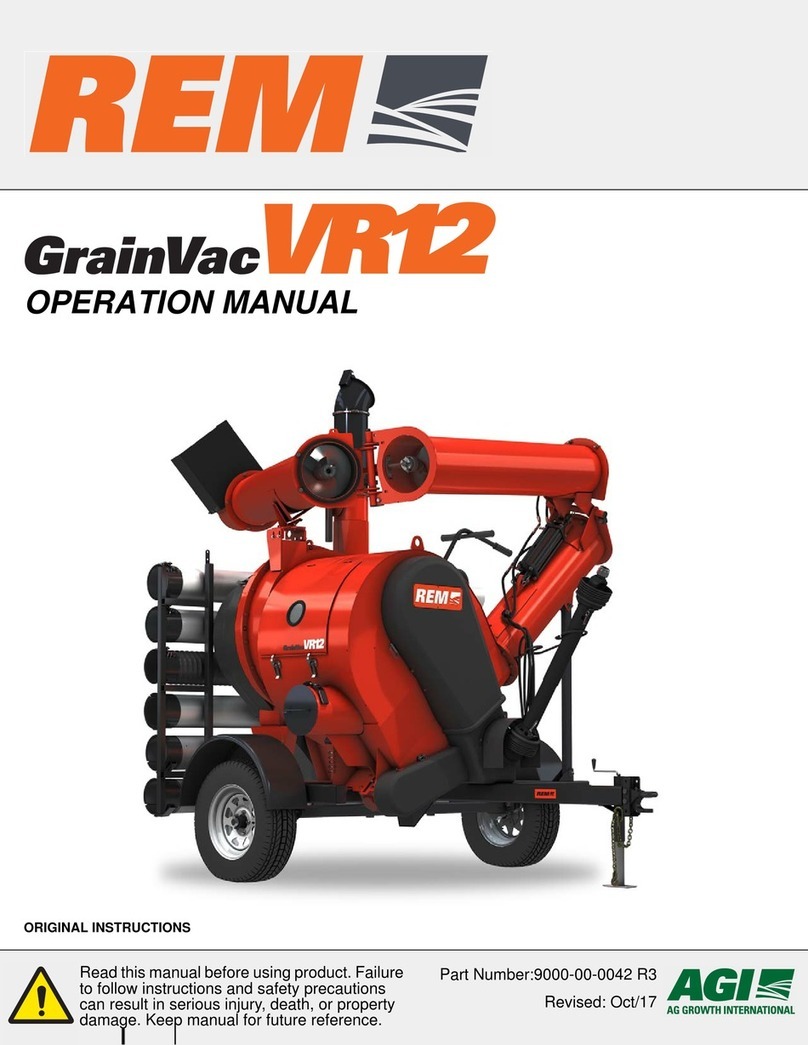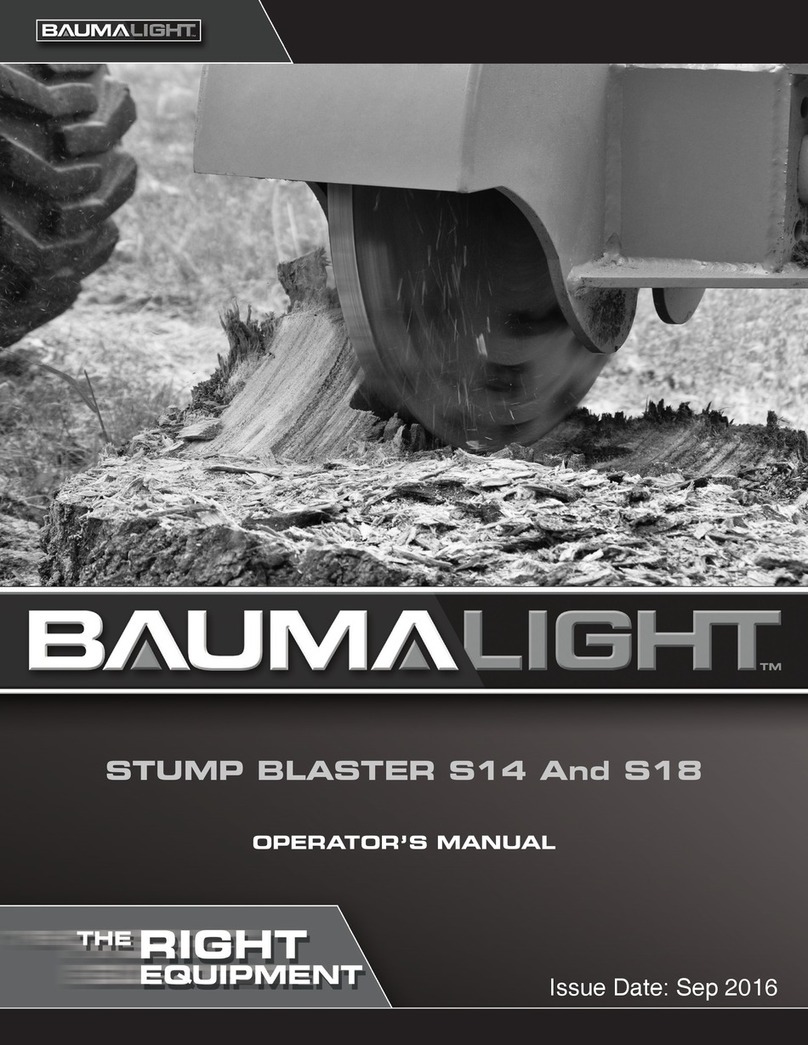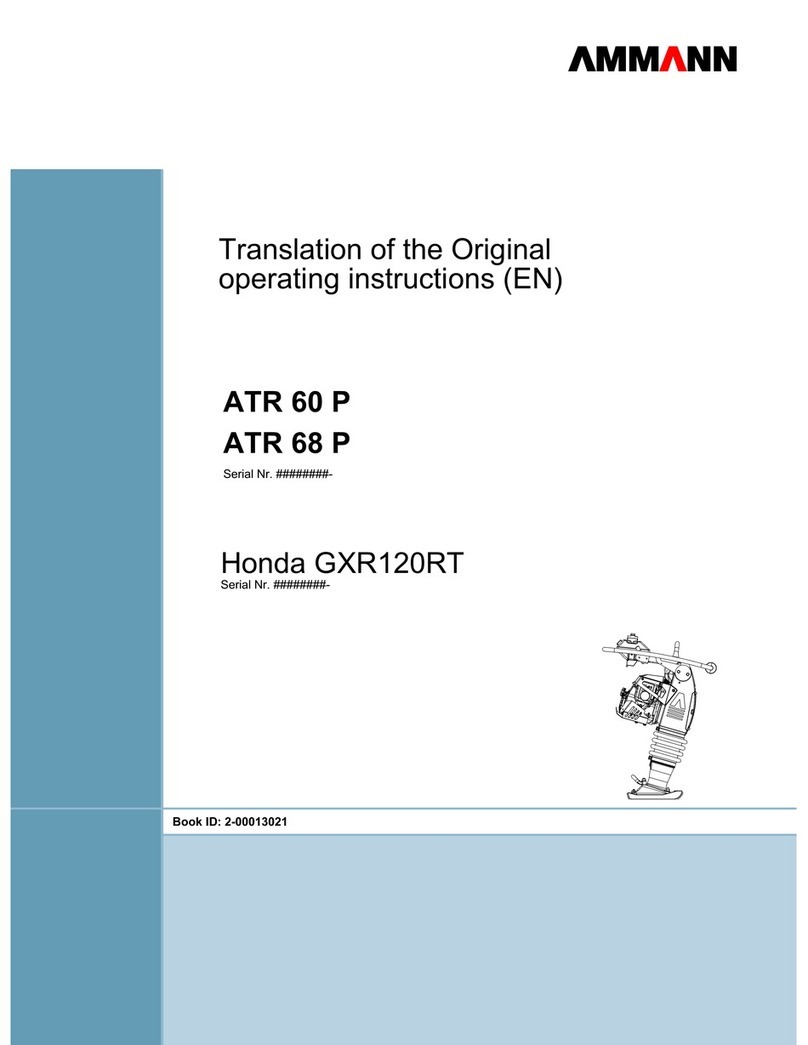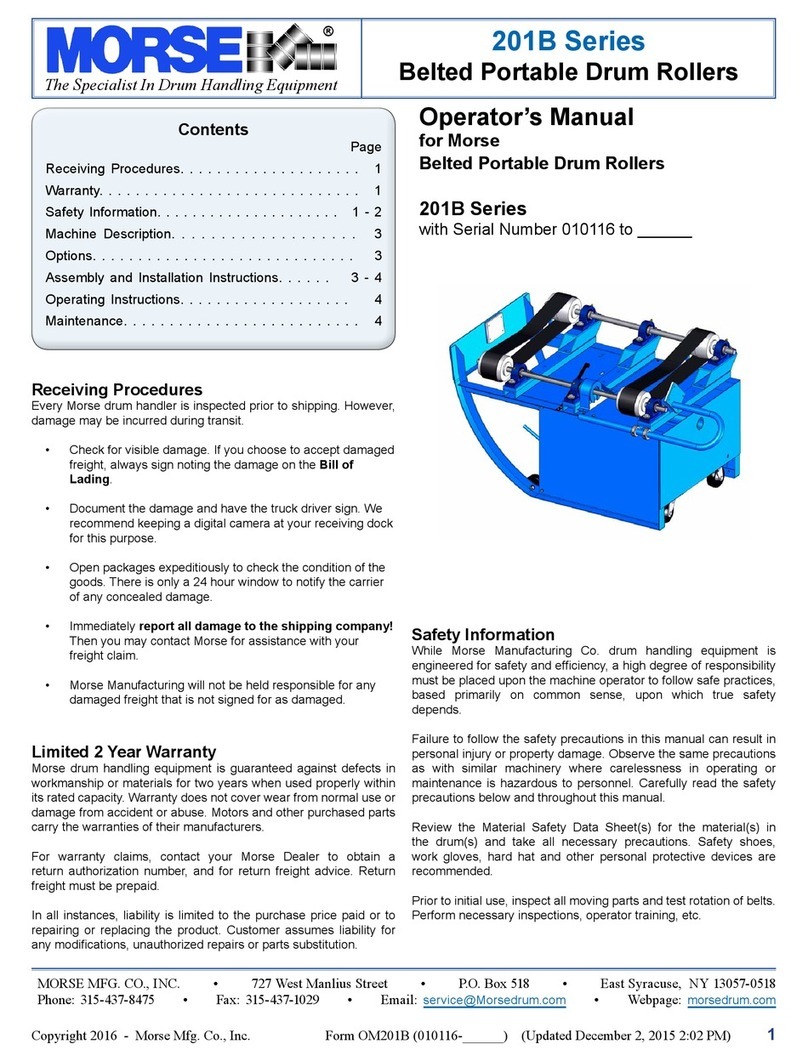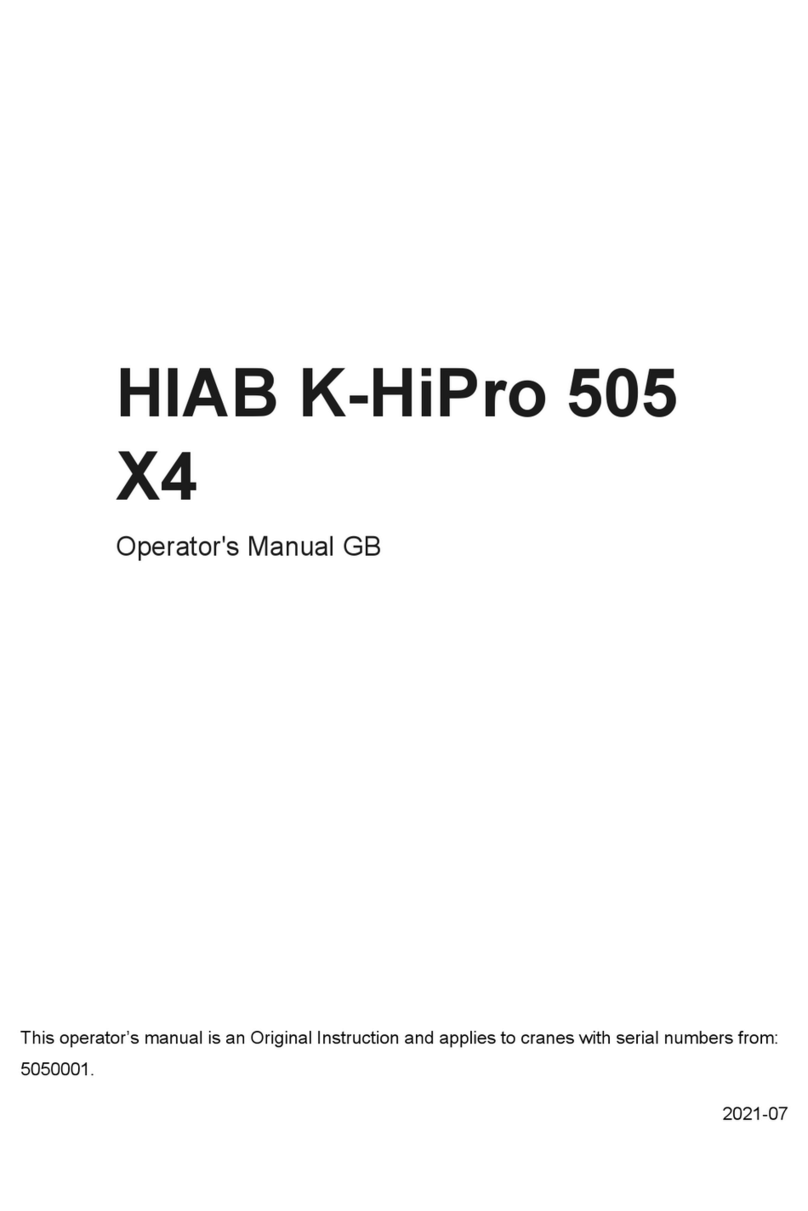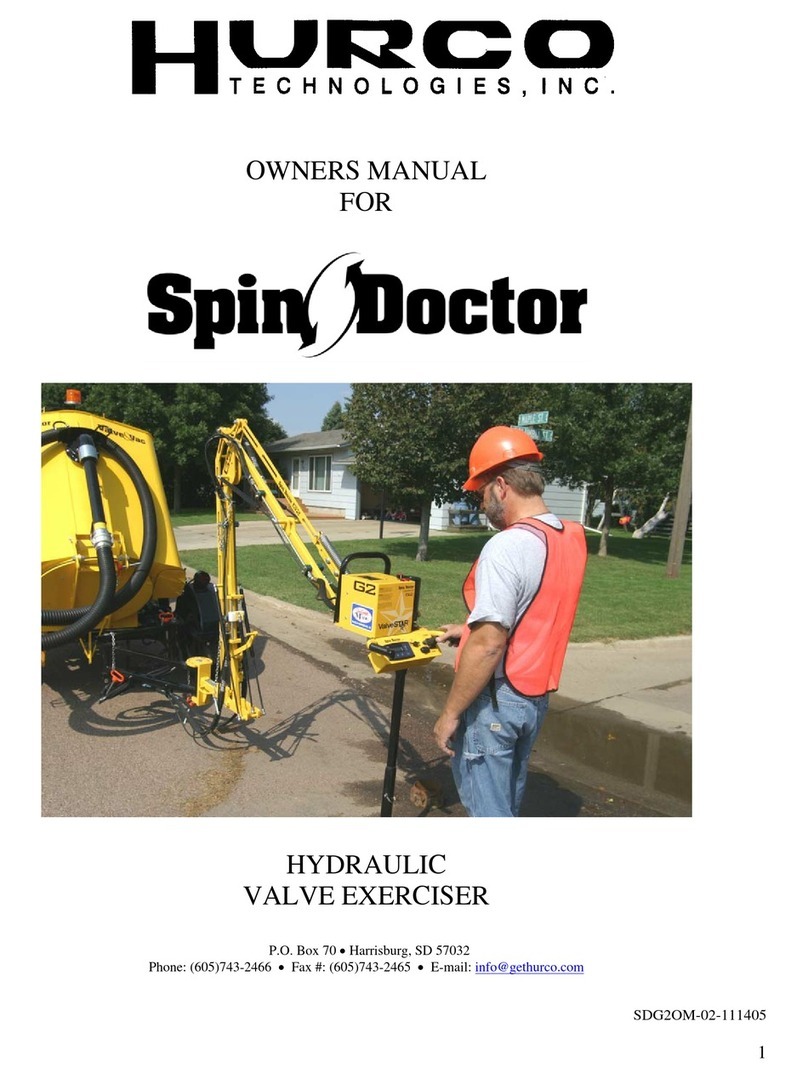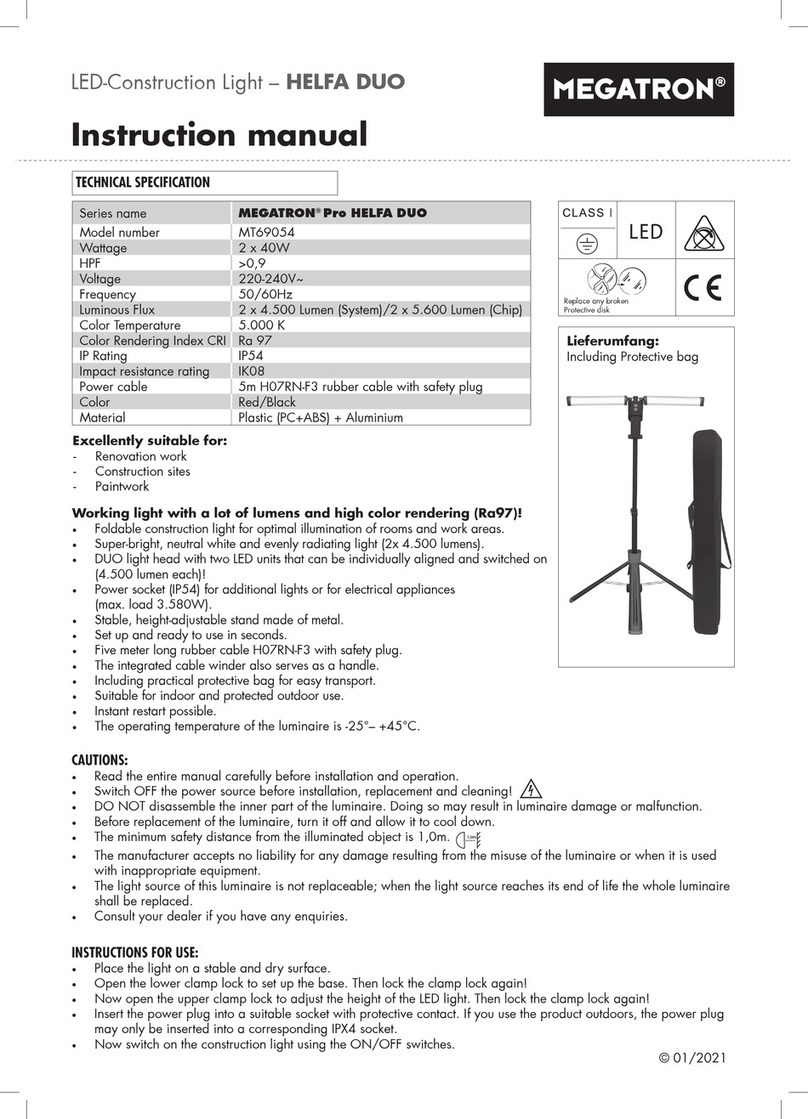GEISMAR MPR-M Instruction Manual

Société des Anciens Etablissements L.GEISMAR
113 bis, avenue Charles de Gaulle
92200 NEUILLY SUR SEINE
Tél : +33 (0)1 41 43 40 40 — E-mail : [email protected]
Société des Anciens Etablissements L.GEISMAR
Boite Postale 50327 5, rue d’Altkirch
68006 COLMAR CEDEX FRANCE
Tél : +33 (0) 3 89 80 41 90 - Fax : 33 (0) 3 89 80 42 28
E-mail : [email protected]
OPERATION & MAINTENANCE INSTRUCTIONS
Model
HYDRAULIC RAIL THREADER
Type
MPR – M
H90461 / NO 10055
Version : 03/11


Version
03/11
HYDRAULIC RAIL THREADER
H90461 / NO 10055
TYPE MPR – M
SUMMARY
CHAPTER - 1 SAFETY
1 – 1 FOREWORD .........................................................................................................................................................1
1 – 2 WARNING .............................................................................................................................................................2
1 – 3 GENERAL SAFETY INSTRUCTIONS...................................................................................................................2
1 – 3 – 1 T
RANSPORT
– S
TORAGE
................................................................................................................................................ 3
1 – 4 SPECIAL SAFETY INSTRUCTIONS.....................................................................................................................4
1 – 4 – 1 E
QUIPMENT
WITH
A
COMBUSTION
ENGINE
....................................................................................................................... 4
1 – 4 – 2 E
QUIPMENT
WITH
ELECTRICAL
DEVICES
.......................................................................................................................... 4
1 – 4 – 3 E
QUIPMENT
WITH
HYDRAULIC
DEVICES
........................................................................................................................... 4
1 – 4 – 4 L
IFTING
EQUIPMENT
....................................................................................................................................................... 5
CHAPTER - 2 PRESENTATION
2 – 1 GENERAL PRESENTATION.................................................................................................................................7
2 – 2 GENERAL INFORMATION ...................................................................................................................................8
CHAPTER - 3 TECHNICAL CHARACTERISTICS
3 – 1 GENERAL CHARACTERISTICS...........................................................................................................................9
3 – 2 DIMENSIONS OF THE RAIL THREADER..........................................................................................................11
3 – 3 LOCATION IN LOADING CLEARANCE..............................................................................................................12
CHAPTER - 4 EQUIPMENTS
4 – 1 LOCATION OF THE MAIN UNITS ......................................................................................................................13
4 – 2 HYDRAULIC UNIT...............................................................................................................................................14
4 – 4 HYDRAULIC CONTROLS...................................................................................................................................15
4 – 5 MOTORISED TROLLEYS ...................................................................................................................................16
4 – 5 – 1 T
RAVEL
TROLLEY
......................................................................................................................................................... 17
4 – 6 MAIN FRAME ......................................................................................................................................................19
4 – 7 ELETRICAL UNIT................................................................................................................................................21
4 – 7 – 1 E
LECTRICAL
ENCLOSURE
............................................................................................................................................. 21
4 – 7 – 2 B
ATTERY
COMPARTMENT
............................................................................................................................................. 22
4 – 7 – 3 L
INING
T
RACK
............................................................................................................................................................. 23
CHAPTER - 5 OPERATING INSTRUCTIONS
5 – 1 HANDLING INSTRUCTIONS ..............................................................................................................................25
5 – 2 PREAMBLE .........................................................................................................................................................25
5 – 2 – 1 R
EMINDER
OF
TERMS
USED
IN
THIS
CHAPTER
............................................................................................................... 25

Version
03/11
HYDRAULIC RAIL THREADER
H90461 / NO 10055
TYPE MPR – M
SUMMARY
5 – 3 PUTTING THE RAIL THREADER ONTO THE TRACK ......................................................................................26
5 – 4 POSITION ON THE SITE....................................................................................................................................26
5 – 4 – 1 T
RACK
REPLACEMENT
SITE
.......................................................................................................................................... 26
5 – 4 – 2 P
ROCEDURE
................................................................................................................................................................ 27
5 – 4 – 3 S
ITE
FOR
REPLACING
TWO
RAILS
.................................................................................................................................. 29
5 – 5 SPECIFIC HANDLING INSTRUCTION ...............................................................................................................31
5 – 6 PUTTING OFF TRACK........................................................................................................................................32
CHAPTER - 6 SERVICING
6 – 1 GENERAL MAINTENANCE INSTRUCTIONS ....................................................................................................33
6 – 1 – 1 R
ULES
TO
BE
FOLLOWED
............................................................................................................................................. 33
6 – 1 – 2 M
AINTENANCE
OPERATION
........................................................................................................................................... 34
6 – 2 PREVENTIVE MAINTENANCE TIME TABLE.....................................................................................................34
6 – 2 – 1 D
AILY
MAINTENANCE
.................................................................................................................................................... 35
6 – 3 INTERVENTIONS AFTER COMMISSIONING....................................................................................................35
6 – 4 PREVENTIVE MAINTENANCE OPERATIONS ..................................................................................................36
6 – 5 MAINTENANCE...................................................................................................................................................37
6 – 5 – 1 I
NTERVENTIONS
AFTER
COMMISSIONING
........................................................................................................................ 37
6 – 5 – 2 C
LEANING
................................................................................................................................................................... 37
6 – 6 PROCEDURE FOR CHANGING A WHEEL........................................................................................................38
6 – 7 HYDRAULIC OIL .................................................................................................................................................39
6 – 8 TABLE OF EQUIVALENCES FOR HYDRAULIC OILS.......................................................................................40
CHAPTER - 7 STORAGE AND RECYCLING
7 – 1 GENERAL STORAGE INSTRUCTIONS .............................................................................................................41
7 – 1 – 1 C
HOICE
OF
STORAGE
CONDITIONS
................................................................................................................................41
7 – 1 – 2 S
TORAGE
PREMISES
.................................................................................................................................................... 41
7 – 1 – 3 P
UTTING
INTO
STORAGE
.............................................................................................................................................. 41
7 – 2 DECOMMISSONING - DISASSEMBLY - DISPOSAL.........................................................................................41
CHAPTER - 8 SPARE PARTS
8 – 1 FOREWORD .......................................................................................................................................................43
8 – 2 AFTER SALES SERVICE DETAILS....................................................................................................................44

WARNINGS
THE MANUFACTURER WILL ACCEPT NO LIABILITY IN THE FOLLOWING CASES :
Machine use contrary to the instructions given in the operating and maintenance manual.
Failure to abide by the periodical checking requirements stipulated by the legislation in force in
the country where the work equipment is used.
Use by unauthorised persons and/or persons without the requisite professional skills.
Consequences resulting from a misunderstanding of the operating and maintenance manual by
the user.
Use contrary to the stipulations of the standards mentioned herein.
Failure to carry out the running-in procedure.
Power supply faults.
Failure to comply with specified servicing rules. Alterations or repairs not authorised by the
manufacturer.
Use of spare parts not supplied by the manufacturer.
Use of different lubricants, fuels and consumables to those recommended in this maintenance
manual.
Exceptional or unforeseeable events.
USE OF THE OPERATING AND MAINTENANCE MANUAL :
The operating and maintenance manual is intended for heads of operations and staff
responsible for servicing the machine as well as all workers required to carry out actions. Their
attention is drawn in particular to the parts relating to safety at work.
The operating and maintenance manual provides the necessary information for correct use of
the work equipment as intended by the manufacturer.
The manual provides operating and maintenance instructions for the work equipment. It does
not dispense the staff using the equipment from training.
The operating and maintenance manual forms an integral part of the work equipment. It must
be kept until the machine has been written off.
The operating and maintenance manual must be kept in a safe place inside the control station
in order to be instantly available if required.
If destroyed or lost, the user will be obliged to order a copy from the manufacturer.
Users may ask the manufacturer to provide additional information and supplement the
operating and maintenance manual in their possession with updates. Once provided, these
items will become integral parts of the operating and maintenance manual.
If the work equipment is transferred, the user is asked to inform the manufacturer of the new
owner’s details.
The user is required to deliver this operating and maintenance manual with the work equipment
to the new owner.
In order to ensure permanent compliance with the legislation in force, the
manufacturer reserves the right to make improvements to the work equipment and to
the operating and maintenance manual without having to update previous editions.
Noncontractual photographs illustrations

Dear customer,
You have just acquired of equipment of work of the Group GEISMAR.
We thank you for confidence that you testify to us and wish that this acquisition give you whole
satisfaction.
The Group GEISMAR requires of you to give a very detailed attention to the
recommendations contained in this document.
A permanent availability of the material and its use under the best conditions of safety require
a control and a regular maintenance. The lifespan of a machine is directly a function of the
care taken to its control and its maintenance.
To ensure you a maintenance of the characteristics of the equipment of work, the Group
GEISMAR draws your attention to the essential points:
Respect the periodicities of maintenance,
Use the lubricants recommended,
Replace the defective elements by original parts,
Not to make any modification,
This constitutes in many cases, one of the conditions to take advantage of your rights of
guarantee and a maintenance of conformity to the regulations in force.
The Group "GEISMAR" recalls you that precision of your order of spare parts, depends a fast
forwarding, and consequently, the productivity of your equipment of work.
By hoping that our material designed and worked out according to the last advanced
techniques, gives you the services that you expect some.
Dear Client, we remain fully at your disposal.
Société des Anciens Établissements L. GEISMAR

DECLARATION OF CONFORMITY
The undersigned manufacturer :
SOCIÉTÉ DES ANCIENS ÉTABLISSEMENTS L. GEISMAR
Boîte Postale 50327
5, rue d'Altkirch
68006 COLMAR CEDEX
FRANCE
Declares that the machinery listed below :
Is compliant with :
- the regulatory requirements defined in the Machinery Directive 2006/42/CE,
Person authorized to prepare the technical file : Project Manager :
D. FURSTOSS
Chief Technical Officer
J. LOLL
COLMAR, the 15/03/2011
IMPORTANT : All changes made to the machinery without the prior wruitten approval of the manufacturer,
shall renderthis declaration null and avoid.
Designation :
HYDRAULIC RAIL THREADER
MPR – M
Code
H90461 / NO 10055
Serial number


L.GEISMAR Company – Prohibited Reproduction©
HYDRAULIC RAIL THREADER
H90461 / NO 10055
TYPE
MPR – M
Marking
.
COMPANY PLATE ENABLING IDENTIFICATION OF THE PRODUCT
PLEASE READ THE OPERATING AND MAINTENANCE MANUAL
IT IS MANDATORY TO WEAR SAFETY SHOES
IT IS MANDATORY TO WEAR PROTECTIVE GLOVES
IT IS MANDATORY TO WEAR A HELMET
WARNING: DO NOT STAND CLOSE TO THE LOAD
WARNING: RISK OF INJURY BY CRUSHING
DANGER: INFLAMMABLE PRODUCTS
POWER VOLTAGE

H90461 / NO 10055
HYDRAULIC RAIL THREADER
TYPE
MPR – M
L.GEISMAR Company – Prohibited Reproduction©
STOP POWER VOLTAGE
RISK OF ENGAGING THE GAUGE
DO NOT PARK IN THE WORK ZONE
TORQUE SETTING
LIFTING POINT
MAXIMUM PAYLOAD

Chap. 1 — page 1
L.GEISMAR Company – Prohibited Reproduction©
HYDRAULIC RAIL THREADER H90461 / NO 10055
TYPE MPR – M
Chapter 1 – Safety
1 – 1 Foreword
Please review the Safety Instructions below applicable to equipment operations.
Three pictograms are used to call users’ attention.
This symbol signals potentially hazardous conditions that might result in
serious or fatal accidents if safety instructions are ignored.
This symbol points out to situations or events that might result in injury if
safety instructions are ignored.
This symbol reminds users of safety rules or of hazardous situations that
might result when such rules are broken.
All persons involved in the operation, maintenance, storage or purchase of this
equipment are required to read and apply these Operation & Maintenance Instructions.
These instructions are intended for all Users in charge of equipment operation and
maintenance.
Instructions and illustrations included in this handbook may differ from actual details
and accessories of your equipment. Basic equipment features may be similar, but the
GEISMAR Company reserves its right to make improvements to the equipment.
These instructions may refer to various equipment options.
For additional information on your equipment or this handbook, please contact the
GEISMAR Company.
When ordering spare parts, or requesting information or service, please provide
equipment reference details, including equipment type, code and serial number.
This information can be found on the nameplate. The nameplate shall be kept in
good condition.

H90461 / NO 10055 HYDRAULIC RAIL THREADER
TYPE MPR – M
Chap. 1 — page 2
L.GEISMAR Company – Prohibited Reproduction©
1 – 2 Warning
It is necessary to have the formation, competences and the tools necessary to
use, maintain and repair correctly this equipment of work.
Before any use of the equipment of work, including in maintenance, imperatively to
take note of its note of instructions of use and maintenance, of its appendices and
regulations of safety in force on the work place.
Scrupulously to respect the general instructions of safety of the building site which are
given by the person in charge of the building site, particularly if work proceeds without
interruption of the traffic.
The use, the maintenance and the repair of the equipment of work could be realized
only by qualified personnel having received a thorough formation as a preliminary.
Technical documentation and the instructions will usefully come to supplement the
knowledge acquired at the time of training courses. But, they cannot in no case to
replace a formal training and practical qualifying, exempted according to the rules of
Article.
If the owner does not feel able to ensure correctly the aforementioned formation his
personnel, which falls on to him, the GEISMAR Company, is at its disposal for councils
relating to the program of this formation. The formation must cover the explanation with
the various functions of the material, the instructions of use, maintenance and the
safety regulations to be respected, as well as the practical exercises.
1 – 3 General safety instructions
The equipment shall be used under normal operating conditions and it shall be
adequately maintained.
Do not use or carry out maintenance operations without adequate training delivered by
qualified personnel, preferably with additional work placement period to get familiar
with the equipment.
Do not start using this equipment unless you know and master all safety features and
conditions, for yourself and for others.
If you have question about equipment operation or work tasks, contact qualified
personnel for information.
Never use the equipment for tasks other than those intended for this equipment.
To prevent accidents or injuries, wearing individual protection clothing and equipment
conforming to safety regulations of the site is required.
The following protection equipment is required:
– Girdle or reflective jacket.
– Boots with steel ends and non-skid soles.
– Helmet.
Or any other equipment required on the building site or for operating the
equipment.
Always keep hands away from moving parts until the equipment is out of service or in a
safe condition. All moving parts of this equipment can crush or shear lower/upper
limbs.
Equipment shall be cleaned on a regular basis, with liquid or grease dirt removed.
All safety signs shall be kept clean and readable at all times; sign plates shall never be
removed of the equipment.

Chap. 1 — page 3
L.GEISMAR Company – Prohibited Reproduction©
HYDRAULIC RAIL THREADER H90461 / NO 10055
TYPE MPR – M
1 – 3 – 1 Transport – Storage
Handle carefully, to avoid the shocks, to use the suitable means.
Respect the instructions of storage if they exist, not to pile up in particular if there is risk
of deformation. Not to store in an abnormal position, to envisage chocks at the time of
transport.
Protect from the external corrosion and aggressions.
IMPLEMENTATION/MAINTENANCE/INTERVENTIONS.
Make a program of inspection and to record all maintenances.
Replace any deteriorated or worn element.
Never not to modify the material without study and authorization of the manufacturer.
Work of maintenance must be completed by qualified personnel controlling the safety
requirements corresponding to the operations to carry out.
FOLLOWING NONA PROLONGED USE OR AT THE TIME OF A PERIODIC CONTROL.
If a deformation or an abnormal wear is noted, the parts must be replaced.
Check the tightening and connections of the fasteners.
IN PHASE OF WORK.
Know the working area and its characteristics, not to admit there that personnel
necessary to the operations.
Respect the general and particular conditions of safety, applicable to the working area
and to keep a constant sedentary vigilance during all the phases of the operations.
Know plans of intervention in the event of incident or accident and instructions of
prevention to be carried out during different the operates.
Never not to use an apparatus in bad condition, (wear, deformation...).
In the case of an abnormal behavior, to warn the qualified people.
Not to cause brutal contacts on the apparatus.
Never not to use the equipment for the transport of people.
Never not to neutralize the limitation or safety devices.
Check that nobody is in the zone of evolution of the material.
Station the material on a way not presenting a slope.
The lanes must have a sufficient gauge.
The lanes must be in a sufficient state to allow the evolution of the material without
risks.
Always use the material except by advancing special regulations of use.
IMPORTANT!
These operation and safety instructions shall never be in conflict with official
regulations in force in the User Country. The person in charge of the equipment
operation shall check that these instructions match local regulations.
In addition, the person in charge of Customer safety shall add any other provision, as
required to improve information of personnel.

H90461 / NO 10055 HYDRAULIC RAIL THREADER
TYPE MPR – M
Chap. 1 — page 4
L.GEISMAR Company – Prohibited Reproduction©
1 – 4 Special safety instructions
1 – 4 – 1 Equipment with a combustion engine
Never start the combustion engine other than from the device provided for this
purpose. The exhaust gases from combustion engines contain products of
combustion which may prove harmful. Always start or use the combustion engine in
a well-ventilated environment. Avoid working positions where the exhaust gases could
come into contact with protected or unprotected parts of the body. All mobile
telephones must be switched off when filling with or handling fuel. Fill the tank with fuel
or maintenance liquids when the combustion engine is switched off and cold. During
filling, keep away from any source of heat (cigarette, flame, welding machines, cutting
machines, etc.). In the event of spillage, clean the tank. All fuels, most maintenance
liquids and emptied fluids are flammable. They must be stored in special closed
containers which are clearly labelled and kept out of reach of unauthorised persons.
Any fuel sprays or leakages onto electrical components or burning surfaces may cause
fires. Unless indicated otherwise, never carry out adjustments while the combustion
engine is running. The additive for the cooling circuit contains alkalis. These may
cause injury to the body. Avoid all contact with the skin and eyes. For the disposal of
emptied liquids, comply with the legislation in force. Pressurised liquids from the
combustion engine can penetrate under the skin and cause serious injury.
1 – 4 – 2 Equipment with electrical devices
Maintenance works on electrical installations must imperatively be carried out by
qualified persons, while complying with the electrical safety regulations specific to the
type of intervention. Never bridge the terminals of the starter or batteries. Bridging
carries the risk of making the emergency stop devices inoperative and of damaging
the electrical or electronic circuit. Keep electrical cabinets away from any moisture
which could give rise to a short-circuit and at worst cause a fire, or which could
cause dangerous malfunctions and damage electronic and electrical components.
Never shunt faulty fuses, and never replace them with higher-amp fuses. This leads to
a risk of fire. Periodically check the condition of the battery contacts, which could be
a source of malfunction. Always keep the battery away from flames or possible
sources of sparks: risk of explosion and fire. The liquid contained in the battery
(sulphuric acid) is toxic and corrosive. In the event of contact with the skin or eyes,
immediately rinse with water. Consult a doctor immediately. Respect the polarity of the
electrical circuit. Incorrect installation may cause serious damage to electrical and
electronic equipment and may cause a fire. Incorrect connection of booster cables
may cause an explosion. When using booster cables, always connect the positive
cable (+) to the positive terminal (+) of the battery and the negative cable (-) of the
auxiliary source to the combustion engine block.
1 – 4 – 3 Equipment with hydraulic devices
Never deform or strike the high-pressure hydraulic pipes. Replace deformed or
damaged hydraulic pipes. Carefully check all hydraulic pipes. Do not use a bare hand
to look for leaks; instead, use a piece of wood or cardboard. Replace any suspect
part. If it is necessary to disconnect hydraulic pipes, there is a risk of whirls or sprays
of liquid. Sprays of liquid can cause serious injury. The hydraulic circuit may be

Chap. 1 — page 5
L.GEISMAR Company – Prohibited Reproduction©
HYDRAULIC RAIL THREADER H90461 / NO 10055
TYPE MPR – M
pressurised. The residual pressure may give rise to uncontrolled movements of the
equipment.
1 – 4 – 4 Lifting equipment
According to the regulations in force, the equipment must be checked and load-
tested by skilled personnel during commissioning and periodically thereafter. Never
lift a load greater than that indicated on the load plate CMU (apart from when following
test instructions). Never hold a load above people. Do not walk or stand close to a
suspended load. Do not leave a load suspended without supervision. When lifting a
load, check before starting that the operation can be carried out without any risk.
Check that the load is correctly attached, be aware of dangers due to the effects of
inertia of a suspended mass. The load must always be followed visually by the
driver; if this is not possible, the driver must seek the assistance of a dispatcher.


Chap. 2 — page 7
L.GEISMAR Company – Prohibited Reproduction©
HYDRAULIC RAIL THREADER H90461 / NO 10055
TYPE MPR – M
Chapter 2 – Presentation
2 – 1 General presentation
Manufacturer
Société des Anciens Établissements L. GEISMAR
Boite Postale 50327
5, rue d’Altkirch
68006 COLMAR CEDEX FRANCE
Description of equipment
Model
HYDRAULIC RAIL THREADER
Type
MPR – M
Code
H90461 / NO 10055

H90461 / NO 10055 HYDRAULIC RAIL THREADER
TYPE MPR – M
Chap. 2 — page 8
L.GEISMAR Company – Prohibited Reproduction©
2 – 2 General information
The MPR-M Rail Threader is a track work machine used on renewal and
replacement sites.
A single operator can easily operate the self-propelled device, which moves on
variable gauge track, with the different handling operations controlled hydraulically.
It has three distinct functions:
– track renewal
– rail replacement

Chap. 3 — page 9
L.GEISMAR Company – Prohibited Reproduction©
HYDRAULIC RAIL THREADER H90461 / NO 10055
TYPE MPR – M
Chapter 3 – Technical characteristics
3 – 1 General characteristics
Manufacturer Société des Anciens Établissements L.GEISMAR
Address 5, rue d’Altkirch 68000 COLMAR
Machine
HYDRAULIC RAIL THREADER
Type
MPR – M
Code
H90461 / NO 10055
Series n°
Creation date
03/11
General characteristics
Overall length with extensions: 3722 mm
Overall length without extensions: 3058 mm
Overall width: 1620 mm
Height of retracted lifting cylinder rods: 1352 mm
Height of extended lifting cylinder rods: 1614 mm
Lifting cylinder travel 500 mm
Weight: 1125 Kg
Number of wheels: 4 (non-isolated)
Wheel diameter: 100 mm
Number of drive wheels: 2
Clamp lighting: 2 x 15 W
Performance
Motorised trolley travel speed 0 to 3.5 km/h
Shifting cylinder thrust 1000 DaN (1 t)
Shifting cylinder tensile strength 500 DaN (0.5 t)
Lifting capacity WLL 4500 Kg

H90461 / NO 10055 HYDRAULIC RAIL THREADER
TYPE MPR – M
Chap. 3 — page 10
L.GEISMAR Company – Prohibited Reproduction©
IC engine
Type Diesel
Manufacturer HATZ
Model 1–D42C
Cycle 4 stroke
Cooling Air
Tank capacity 15l
Rated power 5.2 kW at 3000 rpm.
Mean sound pressure level LpA (at the controls) 85 dBA
Acoustic power LwA (at the controls) 95 dBA
Vibration level 0.58 m/s²
Hydraulics
Tank capacity 50l
Service pressure 50 bar
Dual-body pump 6+6 cm³/rev.
Electricity
Service voltage 12 volts
Number of batteries 1
Battery characteristics 12 V to 60 A/h
Table of contents
Other GEISMAR Construction Equipment manuals
